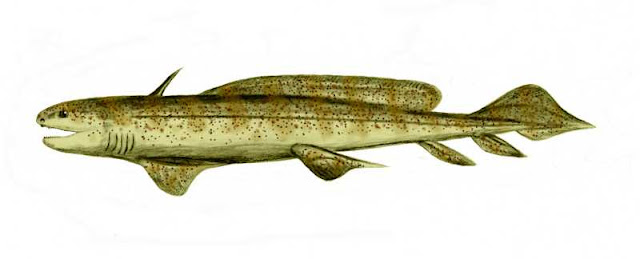Growing up we often kept Rainbow sharks in aquaria. These streamlined pets were fast when they wanted to be and were fairly aggressive. They often jumped from out of the tanks as well. We stopped keeping them after a while. However, these are not true sharks and freshwater sharks are globally rare in modern times.The most common are those of the genus Glyphis, commonly called "river sharks", and Carcharhinus leucas, commonly known as the bull shark. The bull shark is known worldwide (and by many names such as Zambezi shark, Lake Nicaragua shark, and freshwater whaler, to name a few), whereas the Glyphis sharks are less well known, by the general public, but they also enjoy a global distribution. Four extant Glyphis species inhabit mainly southeast Asian, Indian, and Australian rivers including the Ganges, Brahmaputra, and Adelaide Rivers (this is a small fraction of the rivers the extant species inhabit). Two extinct species, G. hastalis and G. pagoda are known from British and southern Asian fluvial fossil records respectively. The most important difference between Glyphis sharks and bull sharks is that the Glyphis sharks are true freshwater-only sharks, whereas the bull shark can adapt and survive in freshwater, but is more suited to marine environments. We could discuss the shallow, brackish water suitability and aggressive nature of bull sharks for days, but we are more interested in the history of freshwater sharks today.
Glyphis sharks are more closely related to ocean-going tiger sharks and reef sharks than they are the original, well represented freshwater sharks. Many fossils from the Order Xenacanthida are known from the Carboniferous Period. The most well known are Xenacanthus and Orthacanthus. Xenacanthus may be the better known genus, on the internet at least, and consisted of many more species than Orthacanthus, even having some species survive the end Permian extinction event and last into the Triassic. Orthacanthus, however, appears to have been an older lineage and died out well before the end Permian extinction event. Both genera of freshwater shark were apex predators in freshwater environments and were likely in direct competition in freshwater environments throughout their existence. Orthacanthus, has a well documented predatory lifestyle. Coprolites (fossilized feces) from Orthacanthus have been discovered containing the remains (often teeth but also bones) of smaller Orthacanthus (cannibalism), other Xenacanthid, tetrapods, and various other fish. The coprolites are known to come from Orthacanthus because skin and other soft tissue impressions in fossils have allowed paleontologists to reconstruct rectal anatomy of Orthacanthus and match this anatomy to the shapes of coprolites.



No comments:
Post a Comment